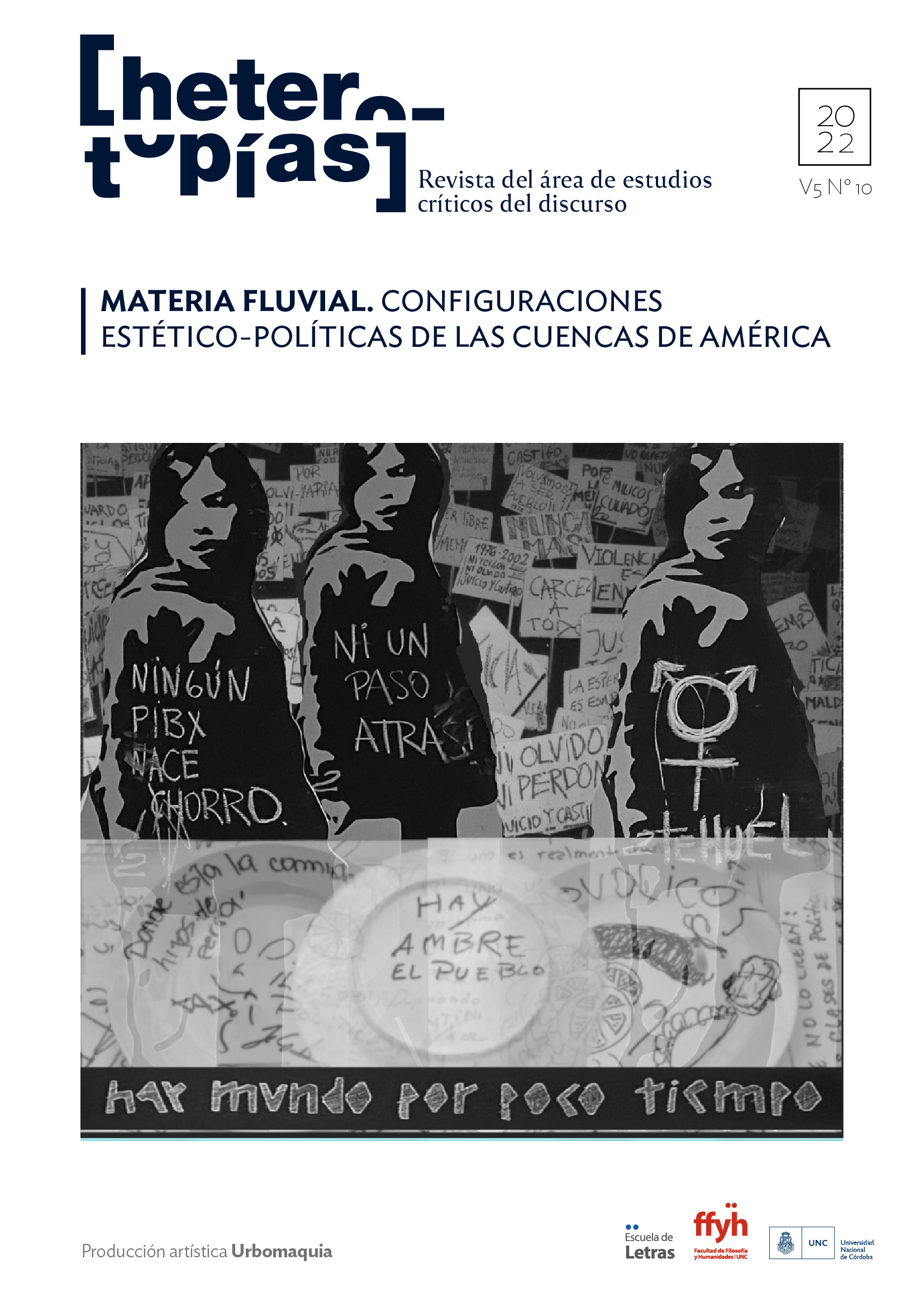Theories and Technologies of the Amazonian Fluvial Landscape
Main Article Content
Abstract
This article studies the various ways of imagining and representing the Amazonian rivers, particularly in the Brazilian context. Through the analysis of essays by Leandro Tocantins, Joao de Jesus Paes Loureiro and Euclides da Cunha, these pages discuss forms of understanding the movement of the river and its connotations, as well as the importance of rhythm and oscillation in the transformation and representation of times and spaces. Working to a certain extent from the perspective of the state’s perception –and particularly considering infrastructural projects that have characterized the way in which the state has dealt with Amazonia– the ideas of labor and incessant change are elaborated. Finally, the article analyzes a short narrative of the Brazilian author and engineer Alberto Rangel, where these elements appear developed from a fictional perspective.
Downloads
Article Details

This work is licensed under a Creative Commons Attribution-NonCommercial-ShareAlike 4.0 International License.
Those authors who have publications with this journal, accept the following terms: Those authors who have publications with this journal, accept the following terms:
a. The authors will keep their copyright and guarantee to the journal the right of first publication of their work, which will be simultaneously subject to the Creative Commons Attribution - Non-Commercial - Share Alike (by-nc-sa) Attribution License; no commercial use of the original work or any derivative works is allowed, the distribution of which must be done with a license equal to the one that regulates the original work.
b. Authors may adopt other non-exclusive license agreements for the distribution of the published version of the work (e.g., deposit it in an institutional telematic archive or publish it in a monographic volume) provided that the initial publication in this journal is indicated.
c. Authors are allowed and recommended to disseminate their work through the Internet (e.g. in institutional telematic archives or on their website) before and during the submission process, which may lead to interesting exchanges and increase the number of citations of the published work. (See The effect of open access).
References
Cunha, E. da. (1999). À margem da história. San Pablo, Brasil: Martins Fontes.
De la Torre, Ó. (2018) The People of the River: Nature and Identity in Black Amazonia, 1835-1945. Chapel Hill, EE. UU.: The University of North Carolina Press.
Deleuze, G. y Guattari. F. (2005) A Thousand Plateaus: Capitalism and Schizophrenia. [1980] Trad. Brian Masumi. Minneapolis, EE. UU.: University of Minnesota Press.
“Entenda o fenômeno "terras caídas", que ocorre na região do Alto Solimões”. Empresa Brasil de Comunicação. Recuperado de https://radios.ebc.com.br/reporter-solimoes/edicao/2015-09/entenda-o-fenomeno-terras-caidas-que-ocorre-na-regiao-do-alto-solimoes
Hatoum, M. (2006) [1989]. Relato de un cierto Oriente. Rosario, Argentina: Beatriz Viterbo.
Kawa, Ni. C. (2016). Amazonia in the Anthropocene: People, Soils, Plants, Forests. Austin, EE. UU.: University of Texas Press.
Leão, A. (2011). Amazonas: natureza e ficção. San Pablo, Brasil: Annablume.
Nugent, S. (2010). Coordenadas en juego: identidad cultural caboclo en la Amazonia. En Perspectivas antropológicas sobre la Amazonia contemporanea. Margarita Chaves y Carlos del Cairo, comp. Bogotá, Colombia: Pontificia Universidad Javeriana, pp. 269-287.
Paes Loureiro, J. de J. (2001). Cultura amazônica: Uma poética do imaginário. San Pablo, Brasil: Escrituras.
Pizarro, A. (2009). Amazonía: El río tiene voces. Imaginario y modernización. Santiago de Chile, Chile: Fondo de Cultura Económica.
Rangel, A. (1914) [1908]. Inferno verde. Scenas e scenarios do Amazonas. Segunda edición. N.P. Typographia “Minerva”.
Tocantins, L. (1983) [1952]. O rio comanda a vida: uma interpretação da Amazônia. Rio de Janeiro, Brasil: José Olympio.
Uriarte, J. y Martínez-Pinzón, F. (2019). Introduction: Intimate Frontiers, A Literary Geography of the Amazon. En Intimate Frontiers: A Literary Geography of the Amazon. F. Martínez-Pinzón and J. Uriarte, eds. Liverpool, Inglaterra: Liverpool University Press, pp. 1-22.
Weinstein, B. (1983). The Amazon Rubber Boom, 1850-1920. Stanford, EE. UU.: Stanford University Press.
White, R. (1996). The Organic Machine: The Remaking of the Columbia River. New York, EE. UU.: Hill and Wang.
